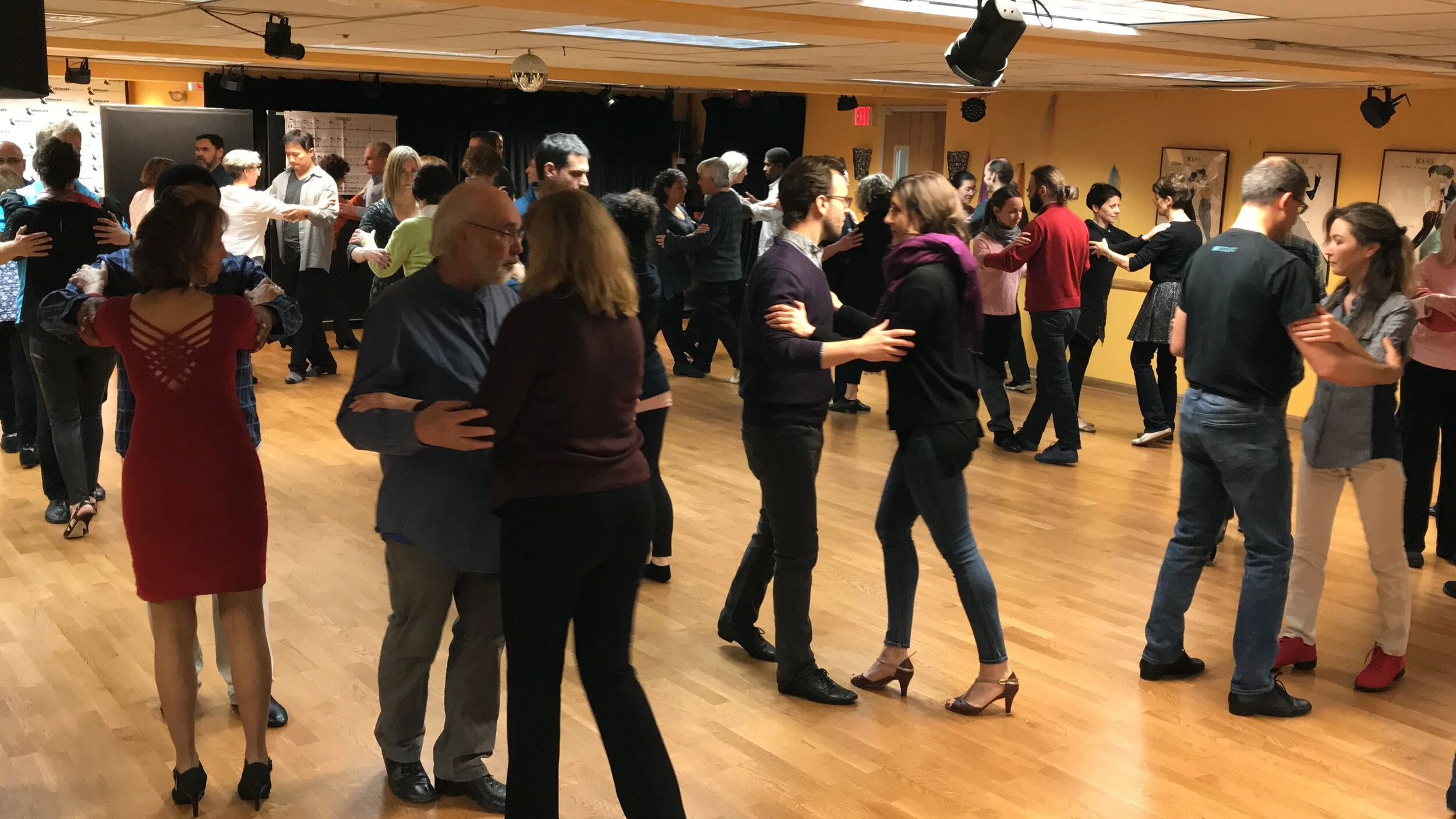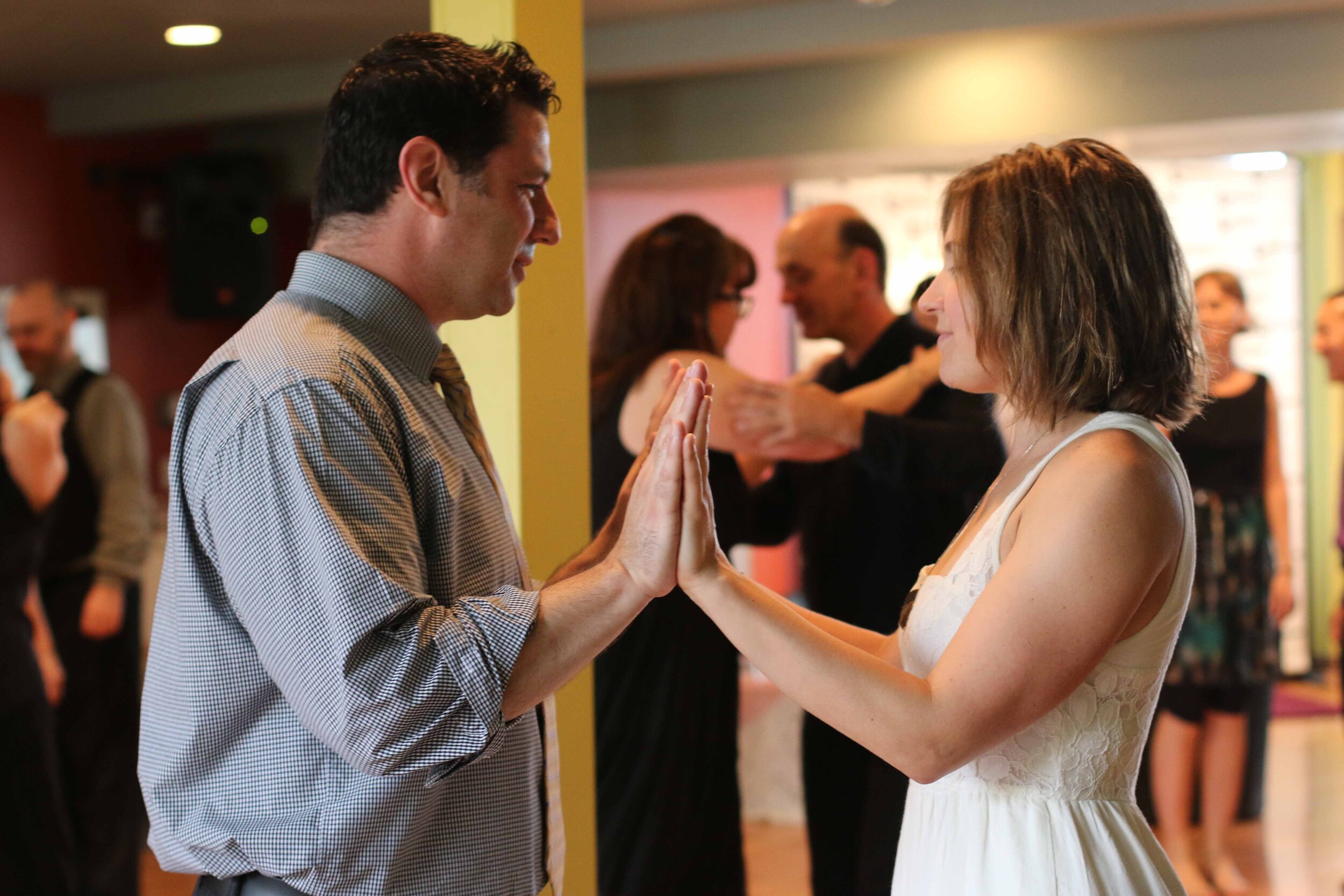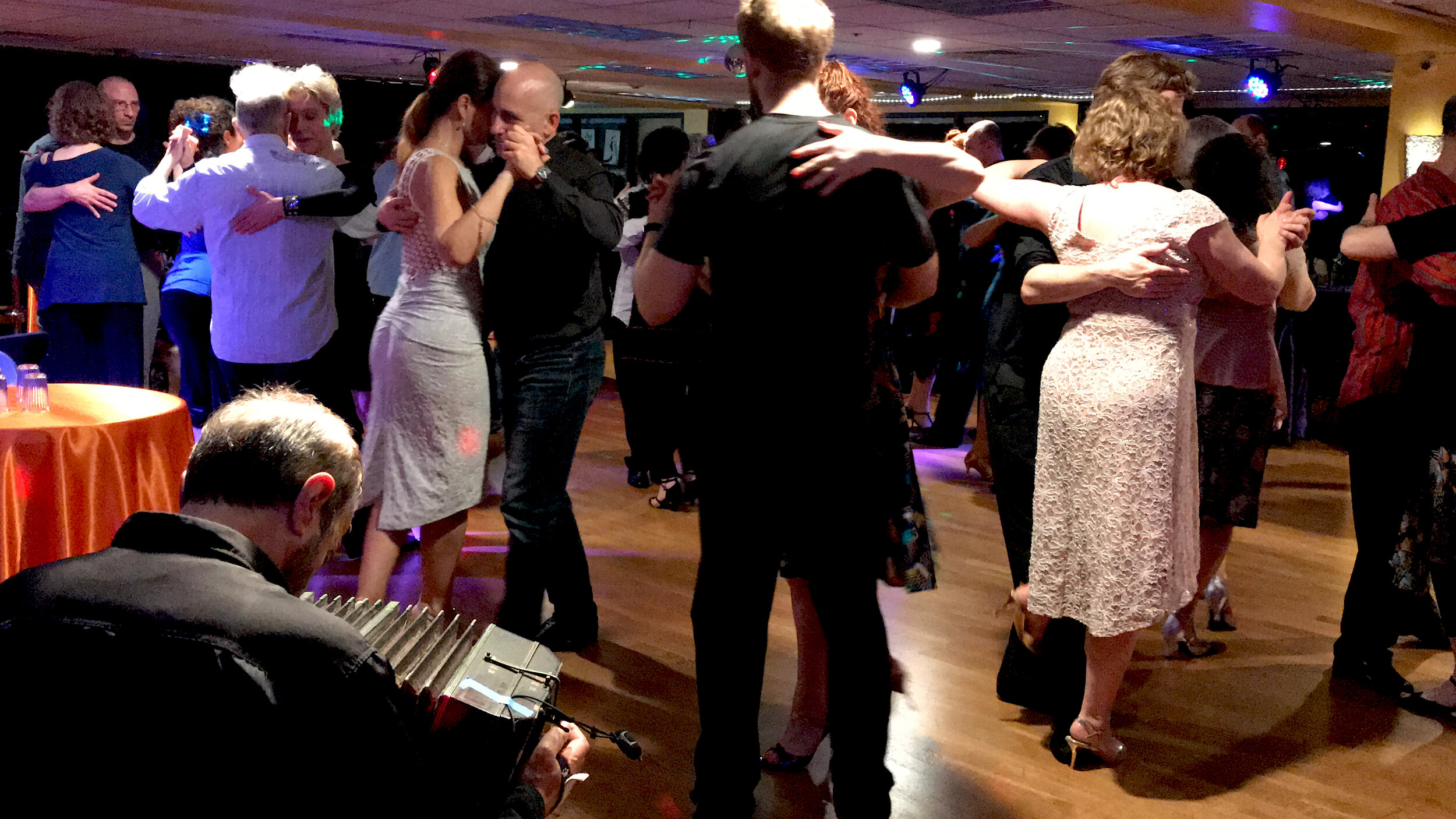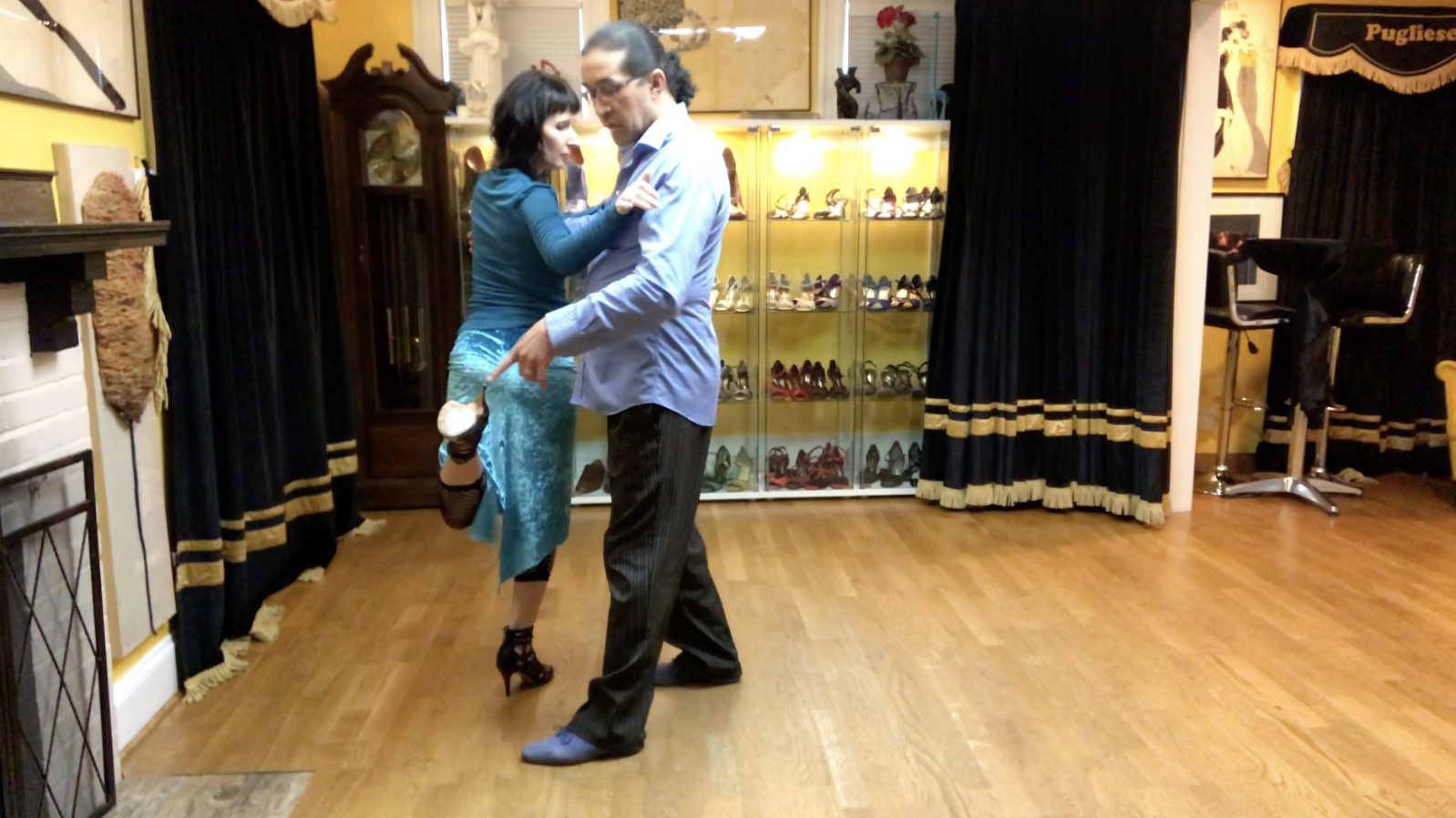Of course, many others have contributed greatly to a more profound and technical understanding and appreciation of Argentine tango. Among these are the inimitable Gloria Dinzel and Rodolfo Dinzel, more popularly referred to as Los Dinzel throughout their long and unparalleled career as tango dancers. In fact, Naveira himself credits the Dinzels as his first teachers.
Pivots, turns, spins, and torsion may seem like small, subtle steps, but they are significant in creating a beautiful effect while dancing.
Read MoreThe musicality of tango will often dictate when these steps are best performed, but knowing how to do them can separate the novice dancer from a master of the dance floor.
Argentine Tango is known for its intense and sensuous dance style that is also romantic and elegant. We compiled a list of the top five most romantic Argentine Tango songs you can learn and dance to!
There are plenty of love songs to swoon over, but what is most popular and seemingly romantic, when analyzed in depth - reveals some not-so-romantic threads.
So, instead, we focused on tango songs with lyrics, rhythm and narrative that capture the most romantic vibe.
Read MoreNow that COVID is almost gone and life is slowly shifting into a state of normality for most, those passionate about tango can now take up their dancing shoes again to learn more or simply enjoy a milonga.
While there are still some limitations, such as the number of people allowed in a gathering, the tango schools re-opening and remaining open are a sign of hope that things will, eventually, go back to once they were.
Read MoreThe day had come! The group classes are finally restarting and we cannot hide the excitement of having all of you back! Seeing you again and checking if that Tango survived in you! And how we can dig it out, bring it back to the surface, and make it even better than before!
Read MoreIn most partner dances, choreography is what makes the dance something to behold. This can often be observed through elegant steps or grand, sweeping movements of the body. Figures and complicated steps are practiced over and over, giving a regular onlooker the impression that dancing is all about bombastic or sophisticated gestures.
Because of this, many believe that for one to dance effectively, one must be fit or athletic, with the ability to move differently on the dance floor than they do in everyday life. To some degree, this is true.
Read MoreYet, strangely enough, Argentine tango is so rooted in its humble beginnings that even the foundation of what is considered good tango dancing is the very thing one does every day: walk.
Various other tango personalities emerged over the years, Among these tango dancers and teachers was Mauricio Castro, who is most notable as the founder of Tango Discovery — a unique method of dancing and teaching tango. However, a cursory internet search of his name strongly suggests that Mauricio Castro and his work might have suddenly disappeared.
This then begs the question: where is Mauricio Castro, and what happened to his unique Tango Discovery method?
Read MoreThe forms of Tango are like stages of a marriage. The American Tango is like the beginning of a love affair when you are both very romantic and on your best behavior. The Argentine Tango is the next stage when you are in the heat of passion and all kinds of emotions consume you. The International Tango is like the end of the marriage when you are staying together for the sake of the children.
Read MoreThere’s always something inherently exciting about trying out a beginner course, and tango lessons are no exception. Many aspiring tangueros and tangueras would rush to tango classes with little to no knowledge about what to expect. On the one hand, this kind of attitude keeps one’s excitement intact, especially for those who are rather fond of surprises. On the other hand, not knowing anything about Argentine tango before taking beginner tango lessons may lead to some measure of disappointment in the long run.
Read MoreAesthetically speaking, tango is a beautiful dance. Not only is this evident in how tangueros and tangueras dress, but in the movements themselves.
Read MoreElegance and sophistication are exhibited by both partners. Thus, for tango to be beautiful, the dancers must also feel beautiful — which is what many women tend to feel, whether they lead or follow.
When asked about why they are addicted to Tango, self-proclaimed Tango addicts have a myriad of intriguing responses. Some answered that it was because of the interaction with the opposite sex. Another referred to Tango as his "quasi-religion" and described it as the artistic expression and freedom he needed to cope with all the order and humdrum of his daily life. One even compared Tango to fishing as a form of meditation.
Read MoreMore than just a dance, tango is an art form, a combination of substance and style — and one cannot exist without the other on the dance floor.
Its fluid, sensual movements make up the tango’s substance, with its lively, vigorous motions providing stylistic appeal. Tango is more than its movements, though.
Read MoreWhen encountering the term axis, one would likely associate it with the rotation of planets or variables in mathematics. In studying tango, however, one would be surprised to know that axis is a recurring term, with the concept playing a significant role in both balance and movement.
Read MoreLa Cumparsita is widely viewed as the anthem of tango music. Originally composed by Gerardo Hernan Matos Rodriguez in 1917, the 100th anniversary of La Cumparsita was marked by tango concerts and all sorts of tributes in 2017.
Read MoreBecause of its ability to tug at the heartstrings, whether one encounters the original or revised lyrics, it would not be surprising at all if La Cumparsita remains popular for another hundred years or more.
The beautiful, and truly the most amazing thing about tango, is that once understood and empowered with all the aspects of improvisation, connection, musicality - it allows you to do anything to any music. It allows you to be who you are, express who you are, what you feel - in that one moment!
It is fascinating to watch how three dances - Tango, Zouk, and Kizomba - get influenced by each other borrowing and incorporating various elements. What’s even more interesting they are all based on improvisation and use close embrace.
Read MorePerhaps, it is the very nature of tango as an improvisational dance that fosters this idea that it is a sensual — even sexual — experience. The freedom with which we can move while dancing the tango is the kind of liberation that is absent in the daily lives of many people, especially to those whose careers demand intense compartmentalization of time and activities.
Read MoreIn the sphere of Argentine tango, Newton’s Third Law can very much apply to the interactions shared by both leaders and followers, wherein each one gives and receives “force.” However, this term should not be mistaken as having the intention to coerce or intimidate. Rather, the concept of “force” in Argentine tango simply translates to the leader’s suggestion or proposal to execute a move and a follower’s response in favor of or in opposition to that suggestion. This dynamic, while applicable to many steps and counterpositions, may be best exemplified by the boleo.
Boleo is a beautiful figure, BUT… Remember a couple of things - Tango is created by two - Leader and Follower. Follower shall use the brain and know better NOT TO execute the high boleo, even if lead, in the crowded Milongas. The leader shall use his smarts to NOT TO lead it, or lead it in a way that does not pose the danger to other couples, or at least have an understanding of WHY the Follower refused the boleo
Read MoreThe team (in the case of Argentine Tango - the couple) needs to fully understand the overarching strategy. WHERE are we going and WHAT are we trying to achieve. Then the HOW becomes the tactic, a small step that is easy to execute once understood and agreed upon the common goal.
Read MoreLooking at the translation, “Por Una Cabeza” is a song that compares one’s addiction to horse racing to an addiction to women. It talks about how the man, from whom the song’s perspective is based, is constantly beleaguered by his enchantment of different women whose passing glances and momentary displays of supposed affection are enough to make him swoon and “gamble” away his love.
Read MoreFor the tango, age is merely a number that does not, in any way, restrict anyone from participating in this dance. If anything, the nature of Argentine tango can evoke feelings of liberation for those who may feel confined to certain stereotypes and perceptions like seniors.
This is because Argentine tango, in principle, has never been about the technicality of movement or the memorization of patterns or steps. By its nature and conception, Argentine tango is a dance that encourages improvisation, operating more on the connection between both dancers and their willingness to exchange energies while on the dance floor.
Read More



















